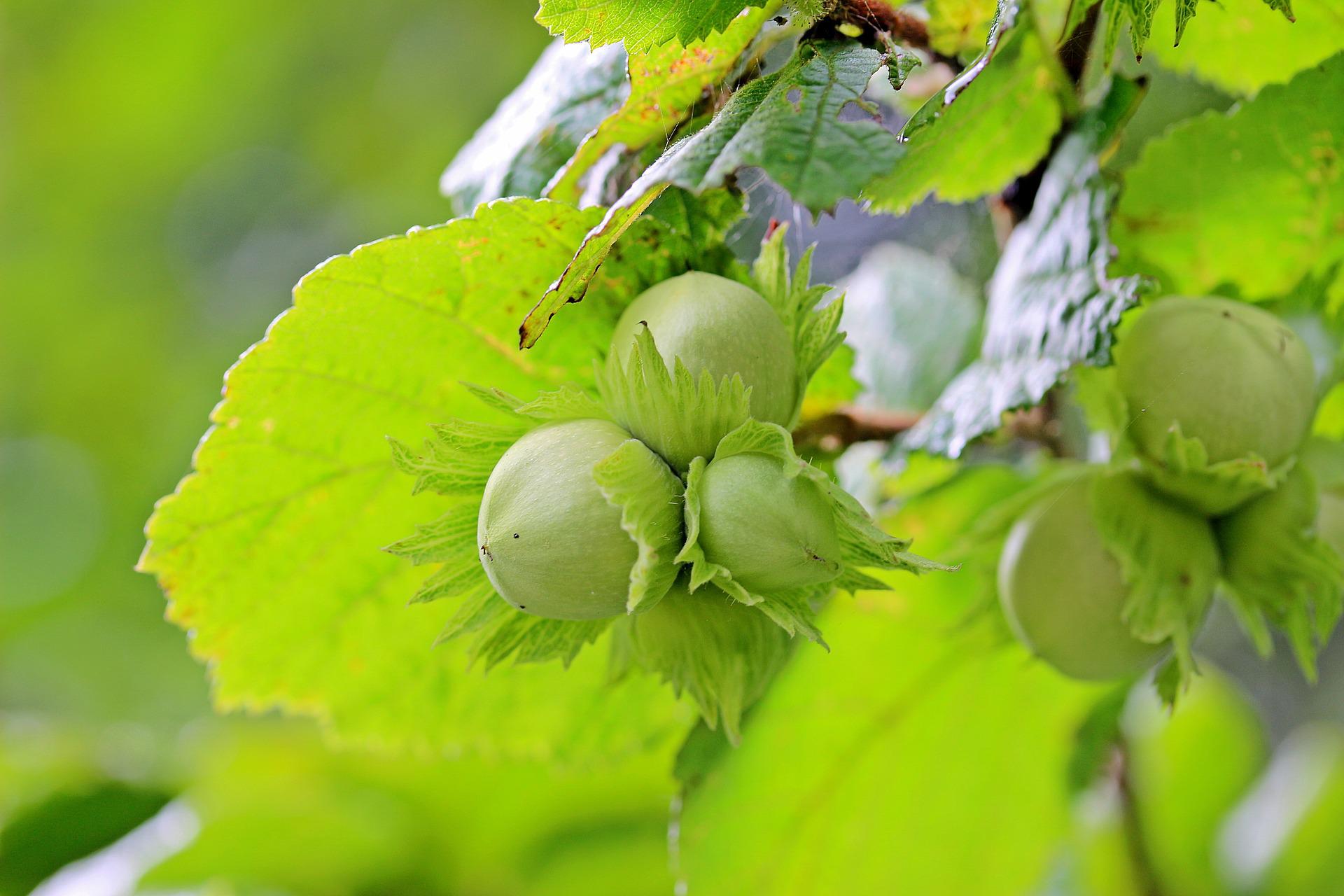Hazelnut Weevil
Curculio nucum L.
The hazelnut weevil is the most important pest of hazelnuts in Croatia. It causes fruit drop and “wormy” nuts. The percentage of damaged fruits ranges from 10% to 40%.
Affected Part
Fruit
Description of the Pest
The hazelnut weevil has a long, thin snout. Its body is reddish-brown, measuring 6 to 9 mm in length, and is covered with dense hairs. The snout is slender and highly curved; in females, it is longer than the body, while in males, it is shorter.
The larvae are creamy-white and can grow up to 16 mm long. They have thick, curved bodies and brown heads. They do not have legs.
Biology and Life Cycle of the Pest
Adults overwinter in the soil. They appear on hazelnuts usually at the beginning of May, feeding on the leaves. Females lay eggs in hazelnut fruits 8 to 12 mm in diameter, without leaving visible marks. They typically lay about 40 eggs. The larvae hatch from the eggs in 5 to 9 days and live inside the fruit. Usually, only one larva develops per fruit, feeding on and developing within the fruit. After 25 to 32 days, the mature larva exits the fruit through holes and descends to the ground. It pupates in a cocoon at a depth of 10 to 15 cm. Some larvae remain in the cocoon over winter, pupate in the spring, and emerge as adults, while others remain in this state for the next 1 to 3 years.
The weevil has one generation every two, three, or four years.
Damage Caused by the Pest
Adult weevils cause damage by feeding on the leaves, creating small holes, and by boring into young, developing fruits, causing them to drop. These damaged fruits are also susceptible to fungal infections. Inside the fruit, the larva feeds on the kernel, filling the nut with frass. Infested fruits are of no value.
Protection Against Hazelnut Weevil
Control measures are warranted if there are more than 3 to 4 weevils per hazelnut bush or tree. Control should begin with the emergence of adult weevils, around early May. Damage can also be reduced by all measures that promote hazelnut growth and the development of as many flower buds as possible.
Hazelnut Gall Mite
Phytocoptella avellanae Nal.
Hazelnut gall mites are common pests of hazelnuts in Croatia, especially in the Istrian region.
Affected Part
Buds
Description of the Pest
Adult mites are very small and white, measuring about 0.3 mm in length.
Biology and Life Cycle of the Pest
This pest is most common in cold and wet springs. In spring, females leave deformed buds to attack young leaves, where they lay eggs. The eggs develop into nymphs, which mature into adult mites in June and July before attacking new buds on the current year’s shoots. The peak migration occurs when the hazelnut has 5 to 10 developed leaves, usually in May. They reproduce in the fall and winter.
There are multiple generations per year.
Damage Caused by the Pest
The mite causes swelling of the buds, which either do not open or produce deformed leaves that dry out.
Protection Against Hazelnut Gall Mite
Control is achieved by treating with endosulfan, sulfur-based products, or acaricides when 3 to 5 new buds have formed on the new growth. If necessary, the treatment can be repeated after about 15 days.
Hazelnut Stem Borer
Oberea linearius L.
Affected Part
Young shoots
Description of the Pest
The beetle is black and measures 11 to 16 mm in length, with a very narrow body. It has thick antennae that are not longer than the body. The legs and the tip of the elytra are yellow.
The larvae are yellowish and grow up to 25 mm long.
Biology and Life Cycle of the Pest
The beetles emerge in May, with females laying eggs singly in young shoots. The larvae bore tunnels in the shoots. They remain in the tunnel through two winters. After the second winter, they pupate in April, and adult beetles emerge in May.
The beetle has a two-year life cycle.
Damage Caused by the Pest
The larvae bore tunnels within the shoots, moving upwards in the fall and downwards in the spring. The leaves at the tips of infested shoots wilt and eventually dry out.
Less Significant Hazelnut Pests
Other less significant hazelnut pests include:
- Hazelnut Aphid (Myzocallis coryli Goetze)
- Walnut Leafroller (Cydia amplana Hb.)













































